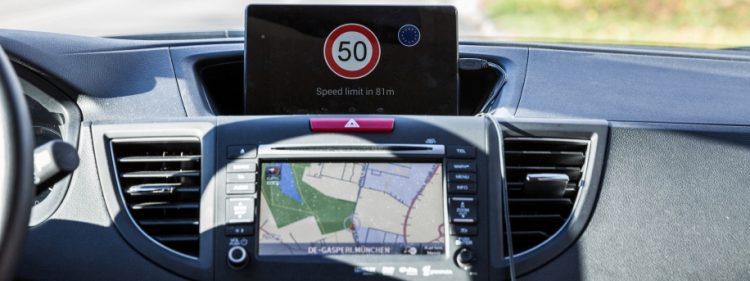Green Light for Vehicle-to-Infrastructure Communications

The Communicating Cars initiative demonstrates the practical benefits of intelligent transport systems (ITS) and their suitability for everyday use on the roads of Europe. Picture credits: NXP Semiconductors
A number of vehicles and traffic lights along two main traffic arteries in Newcastle, U.K, were recently equipped with communication units. Drivers receive information on the duration of the current light phase and an indication of the speed at which they are most likely to reach the green phases or whether they should turn off their engines at a red light.
Whenever possible, the test vehicles also receive a green signal from the control center. Data on the flow of traffic and exhaust emissions will be collected until the end of this year. This information is expected to show that the technology can make traffic at intersections safer, more fluid, and more energy-efficient while lowering emissions. Newcastle University is heading the project, with Siemens and the city government as part of the team.
Experts believe that networking cars with each other and with traffic control centers is an important way to avoid congestion and accidents in urban traffic. The real-time exchange of warnings and information on traffic flow allows drivers to prepare for potentially challenging conditions.
Control centers can use the resulting data to fine-tune the switching patterns of their signaling systems. They can also grant priority to certain vehicles, such as emergency teams. Networked communication among cars and infrastructure is generally creating the conditions necessary for the future automation of urban traffic.
Real-Time Networking
The Newcastle tests are part of the EU’s Compass4D project. The project has been evaluating different applications of cooperative, intelligent traffic systems in seven cities. Siemens, one of the Compas4D partners, has long developed hardware and software solutions for cooperative traffic systems with Corporate Technology, its corporate research department, as well as the Mobility Division. Siemens is also involved in a number of European test fields.
In Newcastle, twelve vehicles belonging to an ambulance service, two electric cars provided by the university and 20 signaling systems were equipped with communication units. Ten times per second, on-board units in the vehicles transmit status messages to so-called roadside units, which are integrated into the traffic lights. The roadside units forward the information to the traffic control center. Communication takes place using a WLAN standard that was specially developed for intelligent traffic systems. Drivers can use an app to display the information from the control center on a tablet. They can check the countdown to the next light change and receive tips on the best route to take under current driving conditions. When a test vehicle reaches a point 200 meters from a traffic light, the light turns green whenever possible.
From Industrial Environments to Traffic Light Management
In the Newcastle project, Siemens is primarily responsible for the roadside units and the exchange of data between cars and the traffic control center. This includes integrating the roadside units with the app, the on-board unit and the traffic control software. The roadside units are based on Scalance systems, which were originally used for communications in industrial plants. In recent years, researchers with Corporate Technology have adapted these units for intelligent traffic systems and developed entirely new software for them. The Scalance systems have since been deployed in a number of test fields.
Norbert Aschenbrenner
Mr. Dr Norbert Aschenbrenner
Editorial Office
Siemens AG
norbert.aschenbrenner@siemens.com
Mr. Florian Martini
Press contact
Siemens AG
florian.martini@siemens.com
Media Contact
More Information:
https://www.siemens.comAll latest news from the category: Transportation and Logistics
This field deals with all spatial and time-related activities involved in bridging the gap between goods and people, including their restructuring. This begins with the supplier and follows each stage of the operational value chain to product delivery and concludes with product disposal and recycling.
innovations-report provides informative reports and articles on such topics as traffic telematics, toll collection, traffic management systems, route planning, high-speed rail (Transrapid), traffic infrastructures, air safety, transport technologies, transport logistics, production logistics and mobility.
Newest articles

Superradiant atoms could push the boundaries of how precisely time can be measured
Superradiant atoms can help us measure time more precisely than ever. In a new study, researchers from the University of Copenhagen present a new method for measuring the time interval,…

Ion thermoelectric conversion devices for near room temperature
The electrode sheet of the thermoelectric device consists of ionic hydrogel, which is sandwiched between the electrodes to form, and the Prussian blue on the electrode undergoes a redox reaction…

Zap Energy achieves 37-million-degree temperatures in a compact device
New publication reports record electron temperatures for a small-scale, sheared-flow-stabilized Z-pinch fusion device. In the nine decades since humans first produced fusion reactions, only a few fusion technologies have demonstrated…





















